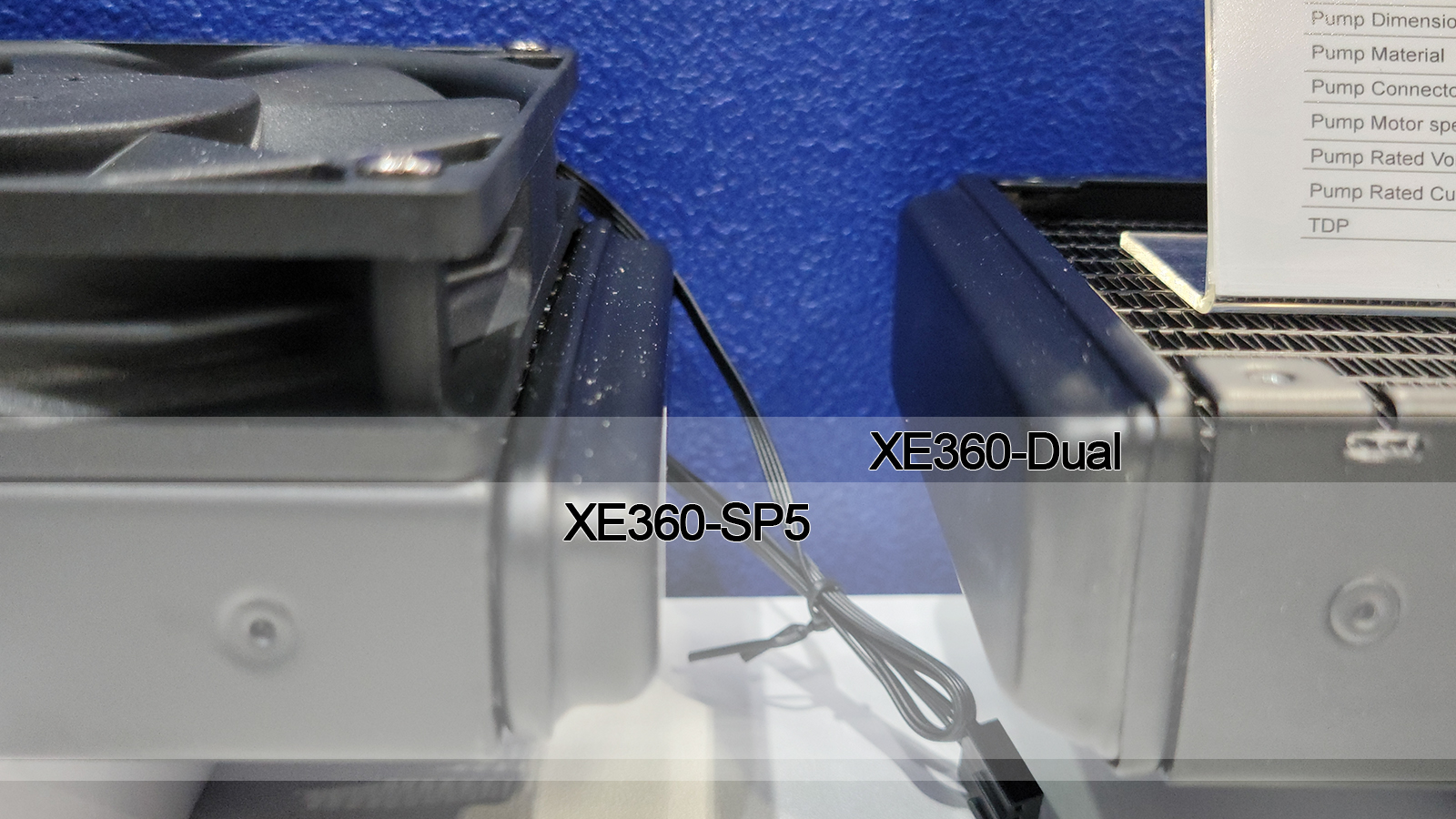This AIO cooler is designed to cool two CPUs at once — SilverStone’s new XE360-Dual
Save on space and cost by using one liquid cooling solution for your dual-CPU workstation.

SilverStone is best known for its cases and cooling solutions, and it’s in the final stages of developing the first dual-CPU AIO cooler with the XE360-Dual. This AIO comes with two water blocks, allowing you to use a single liquid cooling solution for both processors. It’s also compatible with Intel and AMD server chips, so you can use this AIO whether you’re Team Blue or Team Red.
The XE360-Dual is based on the XE360-SP5 AIO, which the company released in October 2023 for AMD’s SP5 socket Epyc server CPUs. However, SilverStone also included optional mounting kits for the LGA4189 and LGA4677 sockets, so you can use it with Intel servers as well.
The XE360-SP5 has its water pump located at the radiator instead of the water block, claimed to reduce the heat on the pump and extend its lifespan. SilverStone retained this pump layout with the XE360-Dual, as we can see the two water blocks, which are placed in serial along the loop, do not have any pumps on them.
Of course, SilverStone cannot just reuse the same radiator for an AIO designed with a single CPU in mind. So, the new AIO’s radiator is thicker by 10mm. This additional height gives the radiator more surface area and mass, allowing it to retain the three 120 mm fans found on the single CPU version.
SilverStone has a reputation for innovations in the consumer space, like its IceMyst AIO, which included stackable VRM and RAM fans to cool other motherboard components. Teamgroup has already launched a dual CPU and SSD AIO, but we have yet to see a dual-CPU cooling solution in the wild.
Dual CPU AIO coolers are a niche product, that’s probably why no one has yet made one. But it’s the perfect solution for those building a workstation or server that requires two processors. The XE360-Dual's role may now be especially crucial as chips get hotter every generation. So, instead of running massive tower air coolers or two AIO coolers inside your case, you can instead use this dual-CPU AIO to keep your PC running optimally while saving space.
Unfortunately, you cannot use the XE360-Dual out of the box as a cooling solution for exotic consumer builds, like putting two different computers in the new Obsidian 9000D case from Corsair. That’s because Silverstone doesn’t offer mounting kits for consumer AM4/5 or LGA 1200/1700 sockets. But if you want to use a single AIO for your GPU and CPU, you should watch out for Lynk+’s modular AIO which could theoretically offer this solution.
Get Tom's Hardware's best news and in-depth reviews, straight to your inbox.

Jowi Morales is a tech enthusiast with years of experience working in the industry. He’s been writing with several tech publications since 2021, where he’s been interested in tech hardware and consumer electronics.
- Paul AlcornEditor-in-Chief
-
Notton Reply
It's fine. Running blocks in series was common before the advent of AIO.Tbonius said:I just cant see how cooling devices hooked up in series can be a great idea.
The second block will run a little warmer, but if the total wattage doesn't exceed the radiator's capacity, it will work.
With today's micro-fin blocks, I think cooling performance would be worse if you ran it in parallel, unless you used 2 pumps. Something about pressure and flow rate loss from splitting tubing into two. -
jp7189 Reply
It's the preferred way to do it. It's hard to ensure equal flow to parallel components. It requires extra valves and flow meters for every junction to get it right, and it doesn't stay balanced forever - requiring someone to monitor and tweak over time.Tbonius said:I just cant see how cooling devices hooked up in series can be a great idea.
In series, as long as water velocity is high enough, there's only a few degrees difference between the inlet and outlet temps. I have a series loop with 4 computers each with cpu and gpu blocks - 8 water blocks in series. There are times when all 4 are running full tilt for many hours, and the max temp gain I've ever seen is 18 degrees from beginning to end. The system uses one shared radiator in a remote room.

